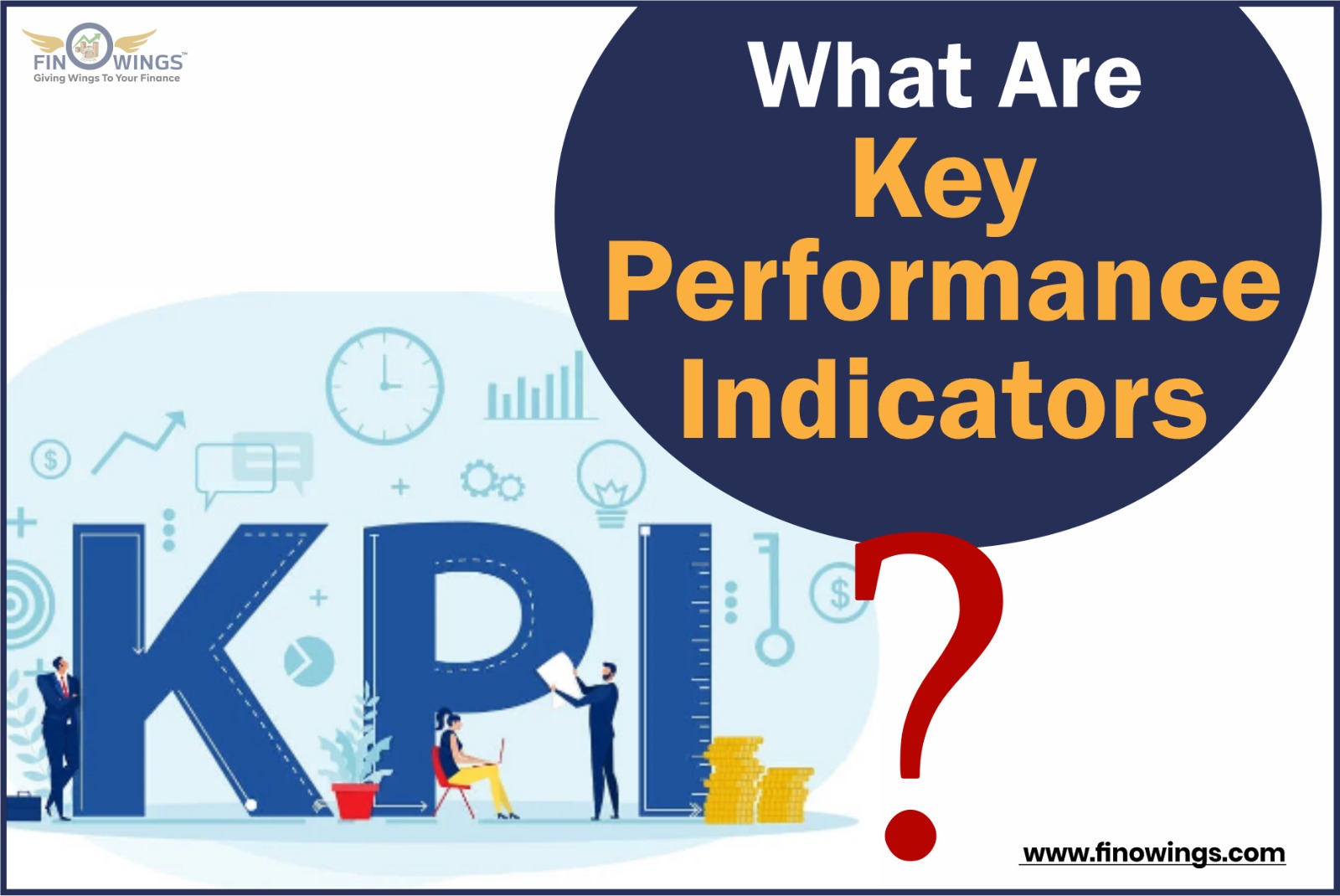Home >> Blog >> What Are Key Performance Indicators (KPIs)?
What Are Key Performance Indicators (KPIs)?

Table of Contents
What Are Key Performance Indicators (KPIs)?
Key performance indicators (KPIs) are a group of quantitative metrics used to assess the overall long-term performance of an organization. KPIs, in particular, aid in determining a company's strategic, financial, and operational accomplishments, particularly when compared to rival companies in the same industry.
KPIs, also known as key success indicators (KSIs), differ between businesses and industries based on performance standards. A software company, for instance, can use year-over-year (YOY) revenue growth as its primary performance measure to achieve the quickest growth in its sector. On the other hand, a retail chain may value same-store sales more highly as the ideal KPI statistic to measure its expansion.
Data collection, storage, cleaning, and synthesizing are the foundation of KPIs. The data could pertain to any division across the entire organization and could be either financial or non-financial. KPIs aim to communicate outcomes so that management may make more informed strategic decisions.
What are the different Categories of KPIs?
Most KPIs fit into four categories: features, users, and periods.
-
Strategic KPI: Usually, the highest-level KPIs are strategic ones. These KPIs may provide information about a company's performance. However, they only offer a generalized picture. Strategic KPIs, like return on investment, profit margin, and total company revenue, are most frequently used by executives.
-
Operational KPI: Operational KPIs are substantially more time-sensitive. These KPIs examine various procedures, market sectors, or geographical areas to determine how a business performs from month to month (or even day to day). The managing staff frequently uses these operational KPIs to analyze queries that result from assessing strategic KPIs. For instance, a CEO would want to know which product lines are having trouble if they discover that overall company sales have declined.
-
Functional KPI: Functional KPIs focus on particular organizational divisions or roles. The marketing department, for instance, tracks the number of clicks each email distribution receives. In contrast, the finance department keeps tabs on how many new vendors they register each month in their accounting information system. These KPIs can be strategic or operational, but they are most useful to a certain group of consumers.
-
Leading/Lagging KPIs: Leading/Lagging KPIs identify the type of data being studied, including whether it signals future events or indicates past ones. Two distinct KPIs are the number of overtime hours worked and the profit margin for a flagship product. If the business observes lower manufacturing quality, the number of overtime hours worked might be a leading KPI. On the other hand, profit margins are a byproduct of operations and are regarded as a lagging indicator.
What are the different types of KPIs?
-
Financial Metrics
Revenue and profit margins often focus on key performance indicators linked to the financials. For example, the most reliable of all profit-based metrics, net profit, measures the amount of income left over as profit for a specific period after considering all of the company's costs, taxes, and interest payments for that same time.
The financial statements of a corporation can be used to calculate financial metrics. However, internal management may find it more beneficial to examine certain figures that are more pertinent to studying the issues or facets of business management. For example, for internal analytical purposes alone, a business might use variable costing to recalculate the balances of some accounts. Financial KPI examples include:
-
Liquidity Ratios (sometimes known as the current ratio, which compares current liabilities to current assets): Based on the short-term assets a company has on hand, these KPIs gauge how effectively it will handle its short-term debt commitments.
-
Profitability Ratios (i.e., net profit margin): These KPIs assess how successfully a business generates sales while controlling costs.
-
Solvency Ratios (i.e., the total debt to total assets ratio): These KPIs gauge a company's long-term financial health by assessing its ability to service long-term debt.
-
Turnover Ratios (also known as inventory turnover): These KPIs assess how quickly a business can complete a task. Inventory turnover, for instance, gauges how rapidly a business can move an item from inventory to sale. Businesses work to enhance activity turnover to create spending cash quicker so they can subsequently recoup that cash through revenue.
-
Marketing:
Marketing KPIs attempt to better understand how effective marketing and promotional campaigns have been. These metrics frequently track the frequency prospective customers take specific actions in response to a given marketing medium. Marketing KPIs include:
-
Website Traffic: This KPI measures the number of visitors to specific pages on a company's website. This KPI can help management understand whether online traffic is being pushed down potential sales channels or if customers are not being funneled properly.
-
Social Media Traffic: This KPI tracks customers' views, follows, likes, retweets, shares, and other measurable interactions with the company's social media profiles.
-
Conversation Rate on Call-To-Action Content: This KPI focuses on targeted promotional programs that ask customers to take specific actions. A specific campaign, for example, may encourage customers to act before a specific sale date expires. To determine the percentage of customers who responded to the call to action, a company can divide the number of successful engagements by the total number of content distributions.
-
Blog Articles Published Monthly: This KPI tracks how many blog posts a business produces in a calendar month.
-
Clickthrough Rates: This KPI tracks the number of particular clicks made on email deliveries. For instance, certain programs may keep tabs on the number of clients that opened an email distribution, clicked on a link, and then made a purchase.
-
Sales:
Sales are a company's primary means of generating income. Although financial KPIs are frequently used to monitor income, sales KPIs take a more detailed approach by utilizing non-financial data to comprehend the sales process. KPIs for sales include, for instance:
-
Customer Lifetime Value (CLV) is a KPI that measures how much a customer will ultimately spend on your goods throughout the business relationship.
-
The Customer Acquisition Cost (CAC) KPI measures acquiring a new customer's sales and marketing expenses. Businesses can assess the success of their client acquisition efforts by comparing CAC to CLV.
-
Average Dollar Value of New Contracts: This KPI assesses the average size of new contracts. A company's desired threshold for acquiring larger or smaller customers may differ.
-
Average Conversion Time: This KPI measures the time it takes from initial contact with a prospecting client to signing a contract to do business.
-
Number of Engaged Leads: This KPI tracks the number of potential leads contacted or met. This metric is further subdivided into mediums such as visits, emails, phone calls, and other customer contacts.
What is the process of developing KPI reports?
Companies gather more data daily, making it difficult to sort through it and identify the KPIs that most influence decision-making. Consider the following procedures as you start to put together KPI dashboards or reports.
Step 1: Go over objectives and plans with business partners. KPIs are just as helpful as their users decide. Understand your business partner's goals before putting together any KPI reports.
Step 2: To create SMART KPI specifications. KPIs should be constrained and connected to precise, measurable, doable, practical, and time-bound measurements. Please focus on the information you have that is readily accessible and ensure that it satisfies the SMART acronym's standards rather than using vague, challenging-to-determine, or unattainable KPIs.
Step 3: Be flexible. Be ready for new business issues to arise as you compile KPI reports, and be prepared for other areas to receive more focus. KPIs should adjust as business and consumer needs change, with specific figures, measures, and targets shifting following operational advancements.
Step 4: Refrain from overburdening consumers. For example, it could be tempting to present report users with as many KPIs as possible. However, KPIs can be challenging to understand at a certain point, making it more challenging to decide which measures should be prioritized.
How to measure KPI?
Depending on the KPI that is being measured. Generally, firms use reporting and business analytics software to measure and track KPIs. It covers all aspects of data collecting from dependable sources, secure data storage, data cleansing to standardize its format for analysis, and actual number crunching. Finally, KPIs are frequently reported using reporting or visualization software.
Advantages and Limitations of KPI
Advantages:
-
A corporation may desire KPI analysis for several reasons. KPIs assist management in understanding specific issues; their data-driven methodology offers measurable data helpful in strategic planning and assuring operational excellence.
-
KPIs assist in holding employees responsible. KPIs can't discriminate among employees because they are statistically supported and don't rely on feelings or emotions. When applied properly, KPIs can boost employee morale since salespeople may become aware that their performance is being closely watched.
-
Additionally, KPIs serve as a link between real business activities and goals. A corporation may create objectives, but without the ability to monitor results, the plans serve little to no value. On the other hand, KPIs enable businesses to set goals and track their success.
Limitations:
-
Working with KPIs has various drawbacks that should be taken into account. KPIs could take a very long time to produce data that is useful. For instance, to better understand trends in satisfaction rates over extended periods, a corporation might need to collect annual data from employees for years.
-
For KPIs to be effective, they must be continuously tracked and closely followed. An unanalyzed KPI report serves no purpose if it is created. Additionally, KPIs that are not consistently checked for validity and plausibility do not promote wise decision-making.
-
KPIs allow managers to "game" the system. Managers may feel motivated to concentrate primarily on raising KPIs linked to performance bonuses rather than genuinely improving procedures or results. Additionally, quality may suffer if managers are overly preoccupied with productivity KPIs, and staff members may feel excessively pressured to reach strict KPIs that may be unreasonable.
What are the different levels of KPI?
-
Businesses can use KPIs on three different levels. First, company-wide KPIs concentrate on the overall performance and health of the organization. These KPIs help let management know how things are progressing. They frequently aren't precise enough to allow for decision-making, though. Company-wide KPIs frequently discuss why particular departments are performing well or poorly.
-
Companies frequently start exploring department-level KPIs at this time. KPIs at the departmental level are more focused than company-wide KPIs. These KPIs are frequently more illuminating as to why particular outcomes are occurring. Due to their concentration on a relatively specific business area, many of the examples given above are department-level KPIs.
-
If a business decides to go even further, it may use project- or sub-department-level KPIs. Management frequently requests these KPIs precisely because they could need extremely specialized data sets that might not always be accessible. For instance, management could want to interrogate a control group in great detail over a proposed product rollout.
Conclusion
KPIs are useful for gauging and monitoring a business's performance on several parameters. As a result, managers may better optimize the company for long-term success by knowing precisely what KPIs are and how to use them properly.

















